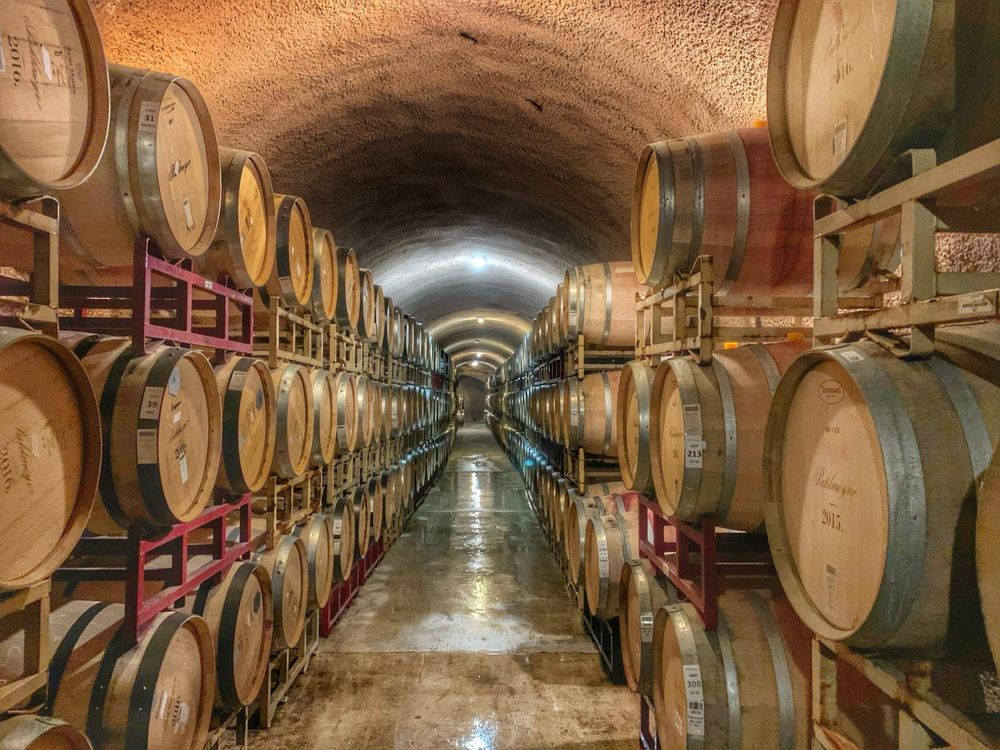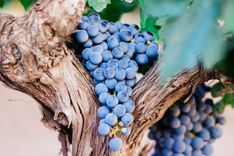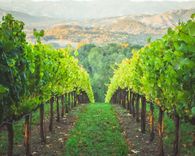
Working at a Winery: Uncorking the Unknown
Imagine yourself sitting on the veranda. It’s the middle of the summer, the sun is shining and in your hand is a chilled glass of white wine. It’s a pretty relaxing image, in that moment you don’t have a care in the world. But have you ever stopped to think about how that wine made it to your glass? Around the world, passionate people have dedicated their lives to producing exceptional wine. In the USA alone, there are over 7,750 wineries. On a global scale, there are so many wineries, it’s almost impossible to obtain an accurate number. But it’s because of the people who work at these wineries around the world that we get to taste the history and tradition of wine. Before we delve into unwrapping the mystery of working at a winery, it is important to define what is a winery. Simply stated, a winery is a licensed property where wine is produced. However, a vineyard is where the grapes are grown. Not all wineries have their own vineyards, some choose to buy grapes from local independent vineyards. In some cases, a winery, which does own its vineyards, will still need to purchase grapes from an independent vineyard to supplement its yield. But whether the winery has its own vineyard or relies on independent growers, it’s safe to say there is never a dull moment or an idle hand to be found while working at a winery.
The Winery Life-Cycle
Regardless of the location, every winery will still need to perform the same basic tasks each year to produce a successful yield. The time frames may vary but the jobs will remain the same. Each winery will have specific work to be done, but it can all be broken down into 4 different stages of the growing season,
1. Early Season
As the name suggests, this season is when the vines come out of their dormant period and begin to grow. During this time workers tending to the vines will need to begin routine vine maintenance. This can include uncovering the vines–some wineries will bury their vines or cover them with burlap or other material to protect the vines from the harsh winter temperature extremes. This early season is also when the vines require aggressive pruning. This will encourage the vines to put their energy into producing the most viable grapes for the year’s harvest.
2. Mid-Season
This season refers to the main growing season for the vines. Vine maintenance will need to continue, ensuring the vines are properly trellised and there are no unproductive shoots sucking the vine’s energy. During this time of year, the grapes are also prone to pests. Therefore active measures are needed to mitigate the damage to the grapevines from these insects. This season is the perfect time to fertilize. The goal is to provide the vines will all of the necessities to grow full, beautiful, and robust grapes.
3. Late Season
The season is dedicated to the harvest. This is arguably the most labor-intensive season for all wineries. Grapes can be harvested mechanically or by hand. However, many winery estates choose to inspect and harvest by hand. It may be a time-consuming process, but it protects the grapes from damage and ensuring only the best grapes are picked. Unfortunately, time is not always on their side. Each year the winery will determine the best time to harvest the grapes based on the natural acid and sugar development in the grapes. This ends up shortening the window in which the grapes can be picked to keep these optimal characteristics remain present in the grapes.
4. Winter or Off-Season
Post-harvest is when the winery gets to work behind the scenes. Working at a winery during this season will involve, processing grapes, fermentation, and bottling. This is when the grapes make the transition from fruit to wine. Back in the vineyard, this is when winter clean-up begins. The vines are ready for their dormant period so they can come back next spring even stronger to produce another great vintage. Now that we better understand the life-cycle of the winery we can break down the work that needs to be done into the vineyard and the winery.
Working in the Vineyard
 The vineyard is essential to wine production. Without a strong team tending to the vines and proper vineyard management, no wine can be produced. Working in a vineyard is hard, yet fulfilling work. There is something almost therapeutic about tending to the earth. For many, seeing the literal fruit of your labor is a very rewarding experience. In the vineyard, workers will need to take on many different jobs, many of which involve working with their hands. These include,
The vineyard is essential to wine production. Without a strong team tending to the vines and proper vineyard management, no wine can be produced. Working in a vineyard is hard, yet fulfilling work. There is something almost therapeutic about tending to the earth. For many, seeing the literal fruit of your labor is a very rewarding experience. In the vineyard, workers will need to take on many different jobs, many of which involve working with their hands. These include,
-
Vine Maintenance
During the spring, vines need to be heavily pruned. Old shoots need to be removed, new growth buds need to be selected and controlled to produce the maximum amount of desired fruit. Many growing areas are plagued by late frost which can pose significant damage to the vines, therefore pruning must be aggressive enough to control the growth of the vine, without damaging it enough that it cannot survive a late frost. Throughout the remainder of the growing season, the vines will need to be inspected, trimmed, and trellised. Without proper care, the vines can quickly turn into an overgrown bush. When this happens, the vines cannot produce enough fruit.
-
Floor Maintenance & Pest Control
These tasks go hand-in-hand. Pests are an inevitable battle every vineyard will need to deal with. Some may choose to use biopesticide sprays or other natural pest control methods. One method of pest control is to remove dead leaves, branches, and other debris from the vineyard floor surrounding the vines. As these decompose they attract insects, fungus, and other grubs which can pose a risk to vine health.
-
Irrigation & Fertilization
Each vineyard will operate differently. Some may choose to let the vine struggle, as it forces the roots to dig deeper into the soil to find what it needs. While others will choose to irrigate and fertilizer to produce more fruit.
-
Harvest
This is the most time-consuming of the vineyard jobs. It’s very common for vineyards to hire seasonal workers during this time to help accomplish this job. The window to harvest the fruit is short, it can vary each year since it’s dependent on reaching the optimal sugar and acid levels in the grapes. Although some vineyards will choose mechanical harvesting, many still do all of the work by hand. This helps prevent damage to the grapes.
-
Winery Cellar Hand
It’s common for someone working in the vineyard to take on other jobs at the winery. Particularly when it is overwhelmed with the amount of work processing and bottling the new vintage. A cellar hand will aid the winemaker with cleaning, filtration, bottling, and other tasks that need to be done in the wine cellar. Usually, this means helping with preparing older vintages for bottling or for market. Although vineyard workers may need to assist with work inside the winery, the main roles are occupied by an entirely winery dedicated team.
Working in the Winery
Work in the winery is never-ending. There is always something to keep staff busy. Throughout the year, the team is checking the previous vintages aging process, bottling, preparing barrels, and organizing shipments around the world. This is just to name a few. The large bulk of work occurs just after the harvest. As the new vintage wine-making progress is beginning to unfold, staff will be a part of each stage. The work can be broken down into 5 steps,
1. Processing the Grapes
This involves removing leaves and other debris from the grapes before they are crushed.
2. Crushing the Grapes
This process extracts the juice. Depending on the wine being produced the skins will be left inside the wine or removed. This controls the color of the wine, the flavor as well as the tannin presence.
3. Fermentation
The grape juice is transferred into a barrel, concrete drum, or other storage vessels for fermentation. This allows natural yeast to break down the sugars and produce alcohol.
4. Filtration
This involves removing the solid–called pomace–from the wine. This can be done by having workers open each barrel and pour the wine through a fine-mesh sieve or by pumping out the wine and leaving the heavier solids at the bottom.
5. Bottling and Aging
Once the wine is ready to be bottled, workers will either bottle by hand or use automated machinery to speed up the bottling process. The new bottles are typically cellared for a period of time until the winemaker deems the new vintage ready to drink. Each of these steps involves a tremendous amount of work to take raw organic material and turn it into the wine we have grown to know and love.
The Fruits of Your Labor
From beginning to end, pruning the vines to the bottling of a new vintage takes a team of dedicated people with a passion for the craft. Winemaking is an art form steeped in tradition, requiring respect for the earth, a willingness to work hard, and patience to trust the process. There is a concept in French called terrior, it’s the idea that wine can showcase a unique sense of place. In each glass, we can be transported back to a specific time of year and a certain vineyard. The temperature of that growing season, the soil conditions, the landscape can all be expressed in the wine. In essence, it’s the closest thing we have to time travel and without the work of these talented individuals working at wineries, we would never be able to experience it. If you are thinking on taking your career into the wine industry, check out the available jobs today!
Like this? Here are some other aritlces you may like

How to Become a Winemaker
Do you want to learn to make wine? Winemakers have the techniques and skills required to make this delicious beverage!

How To Get a Job in the Wine Industry
The wine industry is one of the most lucrative industries today. With a variety of jobs available , it's no wonder that people are looking to get involved!

The Different Sommelier Levels and How to Get Them: What They Mean for Your Career
There are many different levels of sommeliers and each level can have an affect on a person’s career. Let’s talk about each of them.